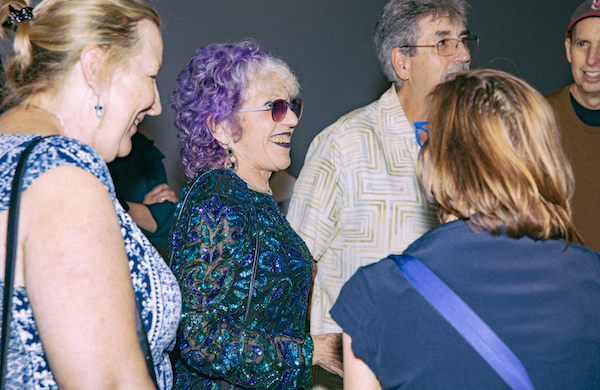Last Saturday, the hottest gallery opening taking place was at Jeffrey Deitch, Los Angeles for the opening of Judy Chicago: Los Angeles. This exhibition presents a largely unseen body of early work, reminding us that about 50 years ago Chicago spent the good part of a decade in Los Angeles and Fresno, California creating bold, colorful art.
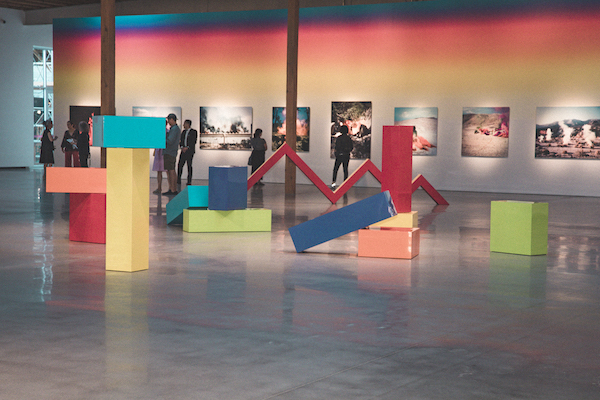
Judy Chicago: Los Angeles at Jeffrey Deitch, Los Angeles. © 2019 Ozeylah Smyth
She enrolled in auto body school, learning how to fuse color, material, and form, as the only woman of two hundred and fifty men in her class. This experience would pave the way for petite Chicago to become a titan of Feminist art, largely in part due to her seminal installation The Dinner Party (1974-79), that, in Chicago’s words via email, “taught a broad and diverse audience about the richness of women’s heritage.”
Chicago’s opening at Jeffrey Deitch, Los Angeles was crawling with people of all ages and walks of life, eager to see her early work and catch a glimpse of – or perhaps even meet – Chicago herself. There were long lines of folks eager to snag limited edition merchandise items at accessible prices ($18-$225), including reproductions of Chicago’s iconic dinner plates from The Dinner Party.

The Sappho Dessert Plate, Judy Chicago. 2019. Limited edition of 150, available for purchase via Prospect. $135
“Over the years, I had noticed that many artists have produced designs for plates and I’ve often wondered why no one had ever approached me with the idea of reproducing some of The Dinner Party images… I was thrilled when Prospect suggested this project,” says Chicago.
Judy Chicago collectors’ items purchased at Prospect‘s capsule shop at the gallery were eligible to be signed by the artist – a practice typical of Prospect product launches. Almost everyone who purchased did indeed take advantage of this rare opportunity. Chicago felt it was important to create objects at accessible prices because, “through these products, more people can learn about my work, and with The Dinner Party plates in particular, about women’s history.”
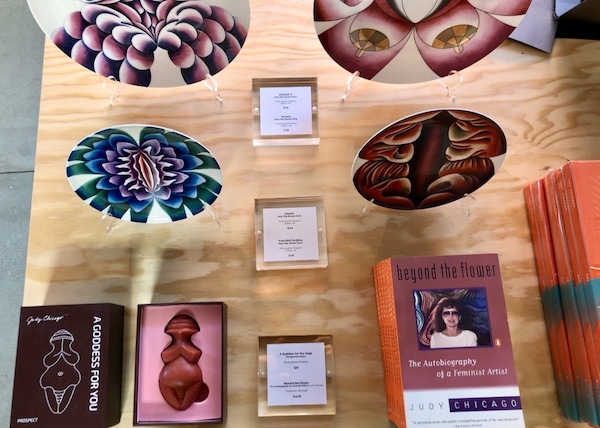
Judy Chicago merchandise at the Prospect capsule shop at Jeffrey Deitch, Los Angeles
Prospect produces limited edition merchandise in collaboration with major contemporary artists at “actionable” prices, in an effort to dispel the belief that art collecting is a hobby reserved exclusively for the well-to-do. Chicago and Prospect could certainly have benefitted by setting prices that were out-of-reach for most except the 1%, but that was out of the question for both parties involved.
“Regarding price points… it’s been very artist and consumer oriented,” says Laura Currie, Prospect’s Founder. “We’re really focused on making the product work for the artist, what they symbolize and what they want to share.” Chicago adds, “Not everyone can afford to purchase an original work of art. By translating the imagery of some of my works on to more attainable objects like plates, scarves, and beach towels, they become more accessible to a wider audience.”
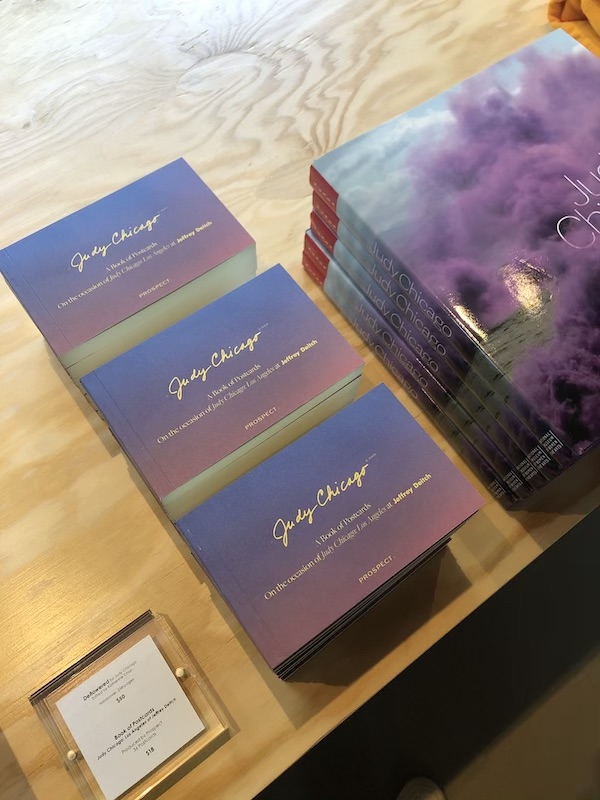
Book of Judy Chicago Postcards at the Prospect capsule shop at Jeffrey Deitch, Los Angeles.
I went home with the most affordable item in the shop, a very sturdy book of postcards with images of works in the exhibition. Chicago signed it with ink in her signature purple, making my purchase even more special.
On my walk back to my car, I imagined what it would be like to show the signed book to my future kids. I’d tell them about how I unsuccessfully tried to extract Chicago from friends, admirers, and fellow art world behemoths at her opening for a brief pre-arranged interview, though she was still gracious enough to answer my questions via email the next day. It’s these sorts of moments that make the fine art world so very seductive – not just for the 1%, but for any curious art lover.
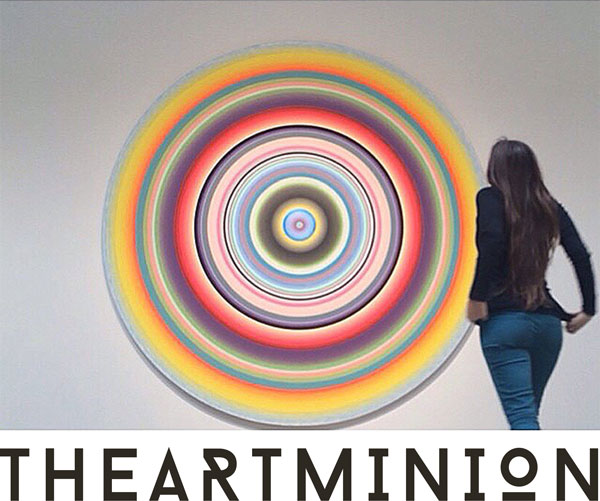
The Art Minion works hard to make the fine art world more accessible by offering a platform to amplify female and minority artists’ voices.
Keep up with The Art Minion on Instagram!
Email pitches to bianca.s.collins@gmail.com

